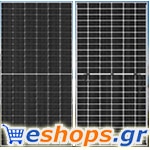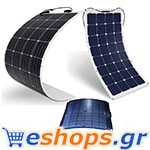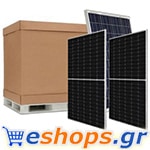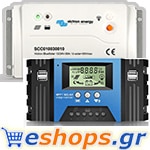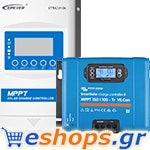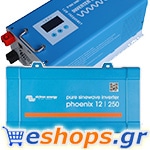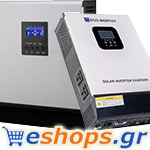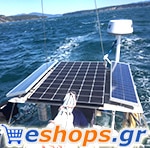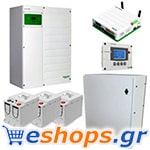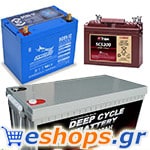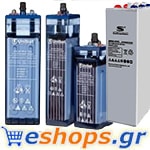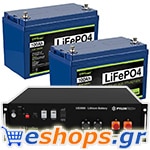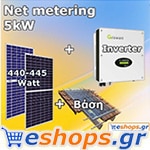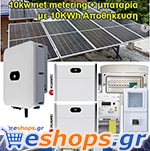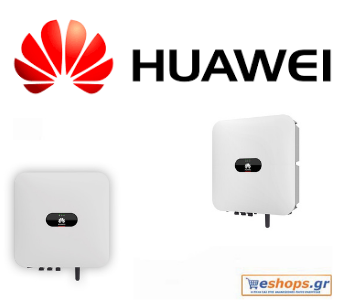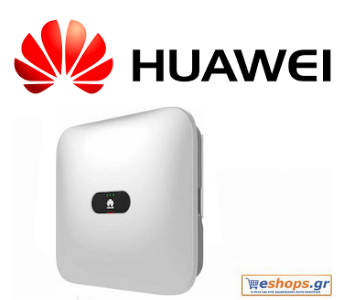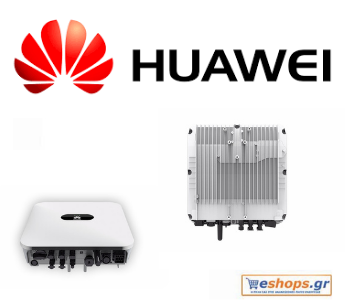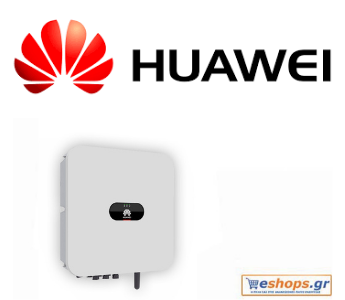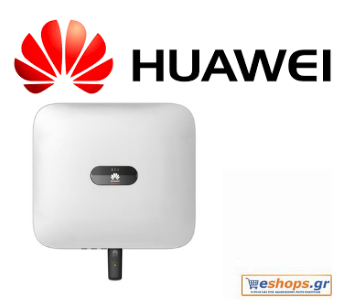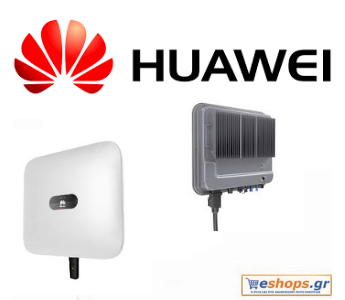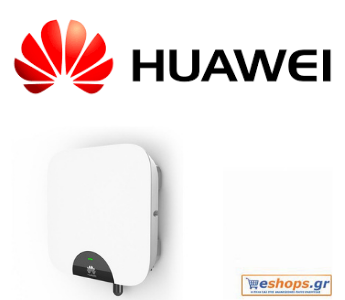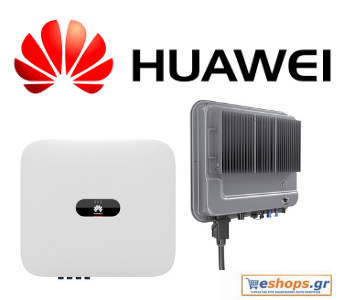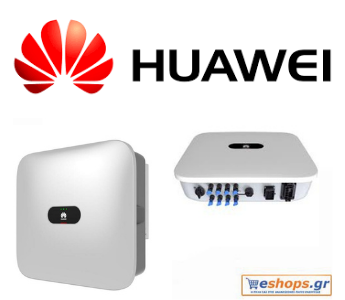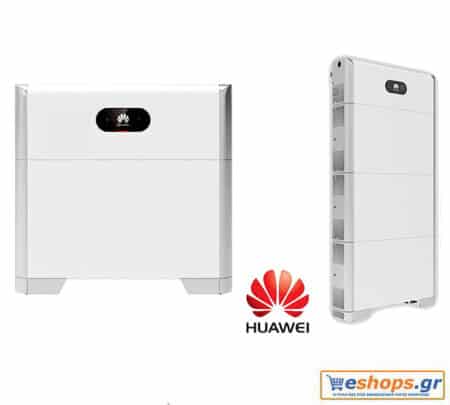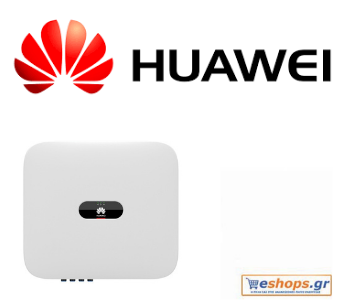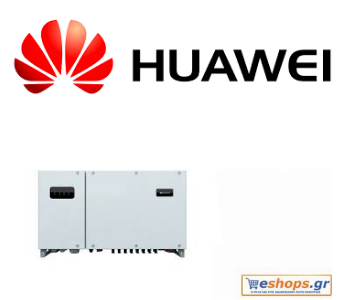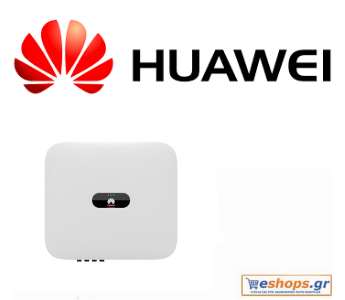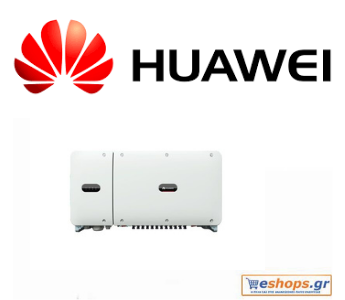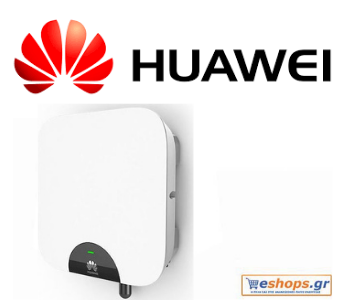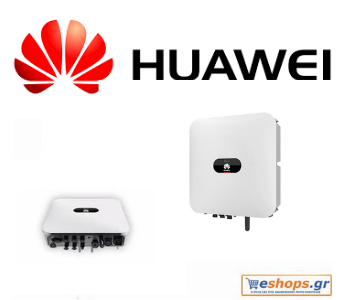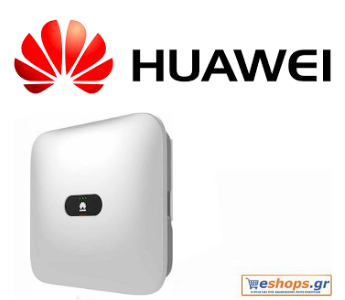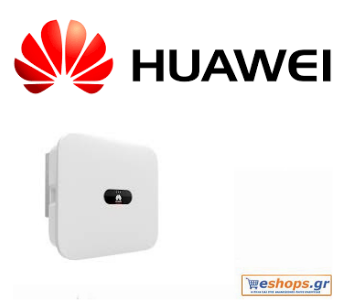Hybrid network inverter. Unleashing the power of solar energy: The on-grid hybrid inverter for PV
Hybrid grid inverter: Are you ready to tap into the unlimited potential of solar energy? Look no further! In today's blog post, we'll delve into a game-changing technology that's revolutionizing the world of PV – the on-grid hybrid inverter. This marvel of innovation not only allows you to harness and store solar energy efficiently, but also seamlessly integrates into your existing electrical grid. Get ready to discover how this powerful device is unlocking new frontiers in renewable energy and pushing us towards a greener future.
What is an on-grid hybrid inverter?
An on-grid hybrid inverter is a device that allows you to harness the power of solar energy and use it in conjunction with your existing grid-connected system. It is an essential component of any photovoltaic (PV) system, as it ensures the efficient and seamless integration of solar energy into your home or business.
grid hybrid inverter: To understand how a hybrid inverter works on the grid, we must first understand its two main functions: inversion and conversion. Inversion refers to the process of converting direct current (DC) electricity produced by solar panels into alternating current (AC) electricity that can be used by household appliances. Conversion, on the other hand, involves monitoring and managing the flow of electricity between various sources – such as solar panels, batteries and the grid – to ensure optimal use.
Unlike traditional grid-tied inverters, which only convert DC to AC electricity for immediate use or export back to the grid, on-grid hybrid inverters have additional features that allow them to store excess solar energy in batteries for future use. use. This means that even when sunlight is not available, you can access the stored energy from your PV system instead of relying solely on expensive grid-supplied electricity.
grid hybrid inverter:A unique feature of grid hybrid inverters is their ability to seamlessly switch between different modes depending on your energy needs. In normal conditions where there is sufficient solar radiation, they operate in 'grid tie' mode – feeding power directly from the PV system, while also sending any excess energy back into the grid.
grid hybrid inverter:However, during blackouts or periods of low sunlight when your PV system cannot produce enough electricity, these inverters have a built-in “islanding” function that disconnects your home from the grid and switches to battery power. This ensures a continuous supply of clean energy without interruptions.
In addition, some advanced models also have a back-up generator interface which can automatically activate a back-up generator if battery levels are too low or during extended periods of low sunlight. This provides an extra layer of security, ensuring your home or business always has access to electricity even during extended power outages.
grid hybrid inverter:An on-grid hybrid inverter is a vital tool for maximizing the potential of solar power and achieving self-sufficiency in your energy needs. Its flexibility and ability to integrate seamlessly with existing systems make it an ideal choice for anyone looking to reduce their reliance on traditional grid-supplied electricity while reducing their carbon footprint.
Benefits of using a hybrid inverter on the grid for PV
An on-grid hybrid inverter is an innovative technology that combines the best of both worlds when it comes to solar power systems. It allows for the integration of both photovoltaic (PV) panels and a traditional grid connection, providing numerous benefits for homeowners and businesses looking to harness the power of solar energy.
1. Maximizes energy production:
A major advantage of using a hybrid inverter on the grid is its ability to maximize energy production. During peak sunlight hours, excess solar energy can be sent back into the grid, reducing your reliance on traditional electricity sources. This not only helps you save money on your utility bills, but also makes your home or business more environmentally friendly.
2. Cost saving:
With an on-grid hybrid inverter, you can significantly reduce your electricity costs by generating your own energy from the sun. Excess energy produced can be sold back to the grid through net metering programs, giving you credits on future electricity bills. Additionally, with a PV system connected to a grid-tied hybrid inverter, you may also qualify for tax incentives and rebates offered by state or federal governments.
3. Backup power supply:
Another major benefit of using a hybrid inverter on the grid is its ability to provide backup power during power outages or other emergencies. In the event of a power outage, the system automatically switches to battery storage mode so you can continue to use essential appliances such as lights and refrigerators without interruption.
4. Easy installation:
Unlike off-grid systems that require complex wiring and additional components such as charge controllers and batteries, installing an on-grid hybrid inverter is relatively simple and hassle-free. It plugs directly into your existing electrical panel, meaning minimal disruption during installation.
5. Longevity:
On-grid hybrid inverters are designed with durability in mind and have a longer lifespan compared to other types of inverters. They are made with robust materials that withstand harsh weather conditions while maintaining their effectiveness. This means lower maintenance and replacement costs in the long run.
6. Flexibility connected to the network:
An on-grid hybrid inverter allows for grid-tied flexibility, meaning you can switch between using solar power and traditional electricity seamlessly. This is especially useful for those who experience fluctuating energy demands or live in areas with limited sunlight.
grid hybrid inverter: An on-grid hybrid inverter offers several advantages that make it a practical choice for anyone looking to harness the power of solar energy. From cost savings and power backup to easy installation and longevity, this innovative technology has truly unleashed the potential of solar power systems.
How does a hybrid inverter work on the grid?
The grid hybrid inverter is a critical component of a solar power system as it allows the integration of both solar and grid power sources. But how exactly does this type of converter work?
grid hybrid inverter: First, let's break down the term “on-grid hybrid inverter”. “Hybrid” refers to its ability to connect to multiple power sources, while “on-grid” means that it is connected to the traditional electricity grid. An inverter, simply put, converts direct current (DC) electricity produced by solar panels into alternating current (AC) electricity that can be used by your home or fed back into the grid.
The on-grid hybrid inverter works by constantly monitoring the power flow and deciding which source to draw from based on demand. When there is enough sunlight and your solar panels are generating electricity, the inverter will prioritize the use of this clean and renewable energy source for your home's needs. Any excess energy not used immediately will be sent back to the grid for credit or stored in batteries for later use.
grid hybrid inverter: On days when there is less sunlight or during night hours, the hybrid inverter on the grid will automatically switch to using grid power. This ensures that your home always has a steady supply of electricity even when solar output may be low or non-existent.
grid hybrid inverter: A key feature of an on-grid hybrid inverter is its ability to synchronize with the grid frequency. This means that if there is an interruption or disruption to the mains power grid, your solar system can disconnect from it and continue to provide electricity independently. This feature, known as island protection, offers peace of mind knowing you'll still have access to essential devices during unexpected outages.
Another important function of a hybrid inverter on the grid is its ability to regulate voltage levels. Solar panels produce direct current electricity at different voltages depending on factors such as weather conditions. The on-grid hybrid inverter continuously adjusts these voltage levels to match those required by your home's electrical system, ensuring a consistent and safe supply of electricity.
grid hybrid inverter: In addition to its technical functions, the hybrid grid inverter also offers user-friendly functions such as remote monitoring and control. This allows you to monitor your solar system's performance and make adjustments as needed from anywhere using a mobile app or web portal.
The on-grid hybrid inverter plays a critical role in optimizing the use of solar energy while still providing a reliable connection to the traditional grid. Its advanced technology and versatile capabilities make it a must-have component for those who want to harness the power of solar energy.
Factors to consider when choosing a grid hybrid inverter
grid hybrid inverter: When it comes to choosing an on-grid hybrid inverter for your photovoltaic (PV) system, there are several factors to consider. This is because the right inverter can make all the difference in maximizing the power output of your solar system.
1. Power rating: The first factor to consider when choosing a grid hybrid inverter is its power rating. This refers to the maximum amount of alternating current that the inverter can handle. It is important to choose an inverter with a power rating that matches or slightly exceeds the total power of your PV panels. This ensures that your system is able to generate and use as much solar energy as possible.
2. Performance: Another critical factor to consider is the performance of the inverter. Efficiency refers to how well an inverter converts the DC power from your PV panels into usable AC power for home consumption. Higher efficiency means less energy loss during conversion and ultimately leads to greater cost savings for you.
3. Type of inverter: There are three types of hybrid inverters in the network – string inverters, micro inverters and power optimizers. String inverters are typically used for large PV systems and convert DC power from multiple panels simultaneously, while microinverters and power optimizers operate at the panel level, converting DC power from each individual panel separately. Depending on the size and layout of your PV system, one type may be more suitable than others.
4. Features: Different on-grid hybrid inverters have various features such as monitoring capabilities, battery compatibility and grid connection capabilities. Monitoring allows you to monitor your energy production and usage, providing valuable information to optimize your system's performance. Battery compatibility allows you to store excess solar energy for later use or during a power outage, making your home more resilient to power outages.
5. Warranty: When investing in a hybrid grid inverter, it is essential to consider the warranty offered by the manufacturer. Most inverters come with a standard warranty of 5-10 years, but some manufacturers offer extended warranties of up to 25 years. A longer warranty period provides peace of mind and ensures your investment is protected.
Choosing the right on-grid hybrid inverter for your PV system requires careful consideration of various factors such as power rating, efficiency, type, features and warranty. It is important to do your thorough research and consult with a professional to ensure you choose an inverter that meets your specific needs and maximizes the potential of solar energy in your home or business.
On-Grid Hybrid Inverter Installation and Maintenance
grid hybrid inverter: Installation and maintenance are critical aspects of having a hybrid inverter on the grid for photovoltaic (PV) systems. Proper installation ensures efficient operation of the inverter, while regular maintenance helps extend its life and optimize power output.
Choosing a suitable location to install your hybrid inverter on the grid is important. The ideal location should be well ventilated, away from direct sunlight, water and other potential hazards. It is also recommended that you place the inverter close to your PV panels to minimize wiring distance and potential energy loss.
Before starting the installation process, it is necessary to carefully read the manufacturer's instructions. Each hybrid inverter in the network may have specific requirements that must be met during installation. If you are not sure about installing it yourself, it is always better to seek professional help.
The first step in installing a hybrid inverter on the grid involves securely mounting it to a wall or sturdy surface using appropriate hardware. Then connect the DC side of your PV system to the designated input terminals on the inverter following the correct polarity. Next, connect the AC output terminals of your inverter to your home's main electrical panel via an approved circuit breaker.
Once all connections are made, turn on the solar panels and then turn on the hybrid inverter to the grid. You will need access to a computer or mobile device connected wirelessly or via an Ethernet cable for initial configuration and monitoring purposes.
After successful installation, regular maintenance is necessary for optimal performance of your hybrid inverter on the grid. Check all connections regularly for loose wires or corrosion that can affect performance over time. Clean any dust or debris that may accumulate around the vents or internal components, as they may cause overheating.
It is also important to regularly monitor performance through software provided by manufacturers or third-party applications designed specifically for this purpose. These apps allow you to monitor energy production levels and identify any problems that may arise immediately.
In addition to these regular maintenance tasks, it is recommended that you schedule professional inspections every 1-2 years. Experienced technicians can perform thorough inspections and identify any potential problems before they escalate, saving you from costly repairs or replacements in the future.
Proper installation and maintenance are essential to get the most out of your grid hybrid inverter. By following these guidelines, you can ensure efficient energy production and extend the life of your investment. Remember to always consult the manufacturer's instructions and seek professional help if necessary to maximize the benefits of solar power with an on-grid hybrid inverter.
Case studies: Success stories of using a hybrid inverter on the grid
Case studies are powerful tools for understanding how a particular technology or product works in the real world. In the case of on-grid hybrid inverters, there have been many success stories showing their effectiveness and impact on solar power systems.
One such success story comes from a small community in rural India. The village had no access to reliable electricity and its residents depended on kerosene lamps for lighting, which posed health risks and added to their economic burden. However, by installing a hybrid grid inverter system, powered by solar panels, the village was able to completely replace the use of kerosene lamps. This not only improved the quality of life of its residents, but also reduced carbon emissions and saved money in the long run.
Another notable example is a hotel located in an off-grid area that relied solely on diesel generators for power. This resulted in high operating costs and contributed to air pollution. By incorporating a hybrid in-grid inverter system with solar panels into their energy mix, the hotel was able to significantly reduce its reliance on diesel fuel while maintaining a stable power supply. This resulted in significant cost savings and improved sustainability for the hotel.
In addition, there have been successful case studies of using hybrid inverters on the grid and in commercial buildings. One such example is a large shopping mall that installed a rooftop solar panel system along with a hybrid inverter solution. The combination allowed them to offset energy consumption from traditional grid sources and produce clean energy during peak hours, when electricity prices are at their highest. As a result, they were able to save thousands of dollars a year on their electricity bills while reducing their carbon footprint.
Additionally, many homes have also benefited from using on-grid hybrid inverters for their solar systems. A family living in an urban area installed such a system and found that they were able to sell excess energy back to the grid through net metering policies implemented by local utilities. This not only reduced their electricity bills but also allowed them to earn extra income from solar power generation.
These case studies demonstrate the successful implementation of hybrid grid inverters in various settings and highlight their potential to revolutionize the use of solar energy. Combining the traditional grid with clean and renewable energy sources, these inverters have proven to be efficient, cost-effective and environmentally friendly solutions to meet our growing energy needs.
Comparison with other solar energy systems
Solar energy has become increasingly popular in recent years as a renewable and sustainable energy source. With the development of various solar energy systems, it can be confusing to understand their differences and which one is best for your needs. In this section, we will compare the on-grid hybrid inverter for PV with other solar power systems to give you a better understanding of its advantages.
Traditional solar panel systems typically use a central string inverter to convert the direct current (DC) electricity produced by the panels into alternating current (AC) electricity that can be used in homes or businesses. However, these string converters have limitations, such as shading from trees or buildings, which can significantly reduce system performance. They also require all panels within a string to have similar orientations and tilt angles, limiting their flexibility.
On the other hand, micro-inverters are attached to each individual solar panel and convert the direct current electricity to alternating current in each panel. This allows for more efficient power generation as the shading or orientation of one panel does not affect the others. However, this also means higher costs due to multiple inverters required for each panel.
The grid hybrid inverter combines the advantages of both traditional string inverters and micro-inverters while eliminating their disadvantages. It allows individual optimization of each solar panel without the need for multiple inverters, significantly reducing costs compared to micro-inverters while maintaining high efficiency levels like them.
Another advantage of grid hybrid inverters is their ability to operate during power outages when connected to battery storage systems. This ensures uninterrupted power supply even when there is no sunlight during peak demand hours or adverse weather conditions.
Compared to off-grid solar systems that require batteries and are not connected to the main electricity grid, on-grid hybrid systems do not require expensive battery replacements and maintenance costs. They also allow excess electricity generated during peak hours to be sold back into the grid via net metering, providing additional savings on electricity bills.
In addition, on-grid hybrid inverters have the advantage of being scalable. As your energy needs grow, you can easily add more solar panels without major changes to the inverter system.
While traditional string inverters and micro-inverters have their own advantages and disadvantages, the on-grid hybrid PV inverter combines their strengths while eliminating their limitations. It provides economical power generation, flexibility in panel orientation and shading tolerance, uninterrupted power supply during outages and scalability for future energy needs.
The Future of Hybrid On-Grid Invert
The future of on-grid hybrid inverters for PV systems looks bright as more and more countries turn to renewable energy sources. With the increasing demand for clean energy, the solar industry is constantly evolving and improving its technologies to meet the growing needs.
One of the main reasons for the popularity of on-grid hybrid inverters is their ability to combine both on-grid and off-grid functionality in one system. This means that in addition to converting DC power from solar panels to AC for use in homes or businesses, these inverters also have battery storage capabilities. This allows them to store excess energy produced during peak hours and use it later when there is more demand or when sunlight is not available.
In addition, with the advancement of technology, modern on-grid hybrid inverters are now equipped with smart features such as remote monitoring and control via mobile apps. This allows users to monitor energy production and consumption in real time, making it easier to manage their systems and make adjustments for maximum performance.
Another exciting development in this area is the integration of artificial intelligence (AI) into on-grid hybrid inverters. AI algorithms can analyze data from various sources, such as weather forecasts, electricity prices and household usage patterns, and optimize system operation accordingly. Using AI technology, these inverters can predict energy requirements and adjust their settings accordingly to ensure optimal performance.
In addition to these features, manufacturers are also focusing on improving the durability and reliability of hybrid inverters on the grid. As harsh weather conditions become more common due to climate change, it has become important for these systems to withstand extreme temperatures, strong winds and heavy rains without any damage.
In addition, efforts are being made to make these inverters more affordable, reducing production costs while maintaining high quality. As a result, we can expect a wider adoption of this technology worldwide as it becomes more accessible to both households and businesses.
With continuous developments and innovations, the future of on-grid hybrid inverters for PV systems is promising. These flexible, smart and cost-effective solutions have the potential to revolutionize the way we harness solar energy and play an important role in our transition to a more sustainable future.
-
Huawei SUN2000 3.68KTL L1-3.680W Photovoltaic Inverter Single Phase
1,200.00 €
614.00 € Excluding VAT
761.36 € Includes VATHuawei SUN2000 3.68KTL L1-3.680W Photovoltaic Inverter Single Phase. Suitable inverter for net metering, photovoltaic on roofs, home and professional photovoltaic systems.
Available on backorder
-
Huawei SUN2000 4KTL L1-4k W Inverter Photovoltaic Single Phase
940.00 €
638.00 € Excluding VAT
791.12 € Includes VATHuawei SUN2000 4KTL L1-4k W Inverter Photovoltaic Single Phase. Suitable inverter for net metering, photovoltaic on roofs, home and professional photovoltaic systems.
Available on backorder
-
Huawei SUN2000 4.6KTL L1-4.600 W Photovoltaic Inverter Single Phase
1,167.00 €
931.71 € Excluding VAT
1,155.32 € Includes VATHuawei SUN2000 4.6KTL L1-4.600 W Photovoltaic Inverter Single Phase. Suitable inverter for net metering, photovoltaic on roofs, home and professional photovoltaic systems.
Available on backorder
-
Huawei SUN2000 3KTL M1-3k W Three Phase Photovoltaic Inverter
1,450.00 €
1,055.00 € Excluding VAT
1,308.20 € Includes VATHuawei SUN2000 3KTL M1-3k W Three Phase Photovoltaic Inverter. Suitable inverter for net metering, photovoltaic on roofs, home and professional photovoltaic systems.
Available on backorder
-
Huawei SUN2000 2KTL L1-2kW Photovoltaic Inverter Single Phase
754.00 €
453.00 € Excluding VAT
561.72 € Includes VATHuawei SUN2000 2KTL L1-2kW Photovoltaic Inverter Single Phase. Suitable inverter for net metering, photovoltaic on roofs, home and professional photovoltaic systems.
Available on backorder
-
Huawei SUN2000 4KTL M1-4k W Three Phase Photovoltaic Inverter
1,290.00 €
1,105.00 € Excluding VAT
1,370.20 € Includes VATHuawei SUN2000 4KTL M1-4k W Three Phase Photovoltaic Inverter. Suitable inverter for net metering, photovoltaic on roofs, home and professional photovoltaic systems.
Available on backorder
-
Huawei SUN2000 5KTL M1-5k W Three Phase Photovoltaic Inverter
1,356.98 €
1,175.00 € Excluding VAT
1,457.00 € Includes VATHuawei SUN2000 5KTL M1-5k W Three Phase Photovoltaic Inverter. Suitable inverter for net metering, photovoltaic on roofs, home and professional photovoltaic systems.
Available on backorder
-
Huawei SUN2000 6KTL M1-6k W Three Phase Photovoltaic Inverter
1,513.00 €
1,199.00 € Excluding VAT
1,486.76 € Includes VATHuawei SUN2000 6KTL M1-6k W Three Phase Photovoltaic Inverter. Suitable inverter for net metering, photovoltaic on roofs, home and professional photovoltaic systems.
Available on backorder
-
Huawei SUN2000 5KTL L1-5k W Photovoltaic Inverter
950.00 €
755.00 € Excluding VAT
936.20 € Includes VATHuawei SUN2000 5KTL L1-5k W Inverter Photovoltaic Single Phase. Suitable inverter for net metering, photovoltaic on roofs, home and professional photovoltaic systems.
Available on backorder
-
Huawei SUN2000 10KTL M1-10k W Three Phase Photovoltaic Inverter
2,360.00 €
1,615.00 € Excluding VAT
2,002.60 € Includes VATHuawei SUN2000 10KTL M1-10k W Three Phase Photovoltaic Inverter. Suitable inverter for net metering, photovoltaic on roofs, home and professional photovoltaic systems.
Available on backorder
-
Huawei SUN2000 20KTL M2-20k W Three Phase Photovoltaic Inverter
2,990.00 €
2,299.00 € Excluding VAT
2,850.76 € Includes VATHuawei SUN2000 20KTL M2-20k W Three Phase Photovoltaic Inverter. Suitable inverter for net metering, photovoltaic on roofs, home and professional photovoltaic systems.
Available on backorder
-
Huawei LUNA2000-5-E0 5kWh Lithium Photovoltaic Battery (Battery Module)
3,335.00 €
2,319.00 € Excluding VAT
2,875.56 € Includes VATHuawei LUNA2000-5-E0 5kWh Lithium Battery for Photovoltaics (Battery Module)
Available on backorder
-
Huawei SUN2000 8KTL M1-8k W Three Phase Photovoltaic Inverter
1,950.00 €
1,465.00 € Excluding VAT
1,816.60 € Includes VATHuawei SUN2000 8KTL M1-8k W Three Phase Photovoltaic Inverter. Suitable inverter for net metering, photovoltaic on roofs, home and professional photovoltaic systems.
Available on backorder
-
Huawei SUN2000 36KTL M2-36k W Three Phase Photovoltaic Inverter
2,400.00 €
1,916.12 € Excluding VAT
2,375.99 € Includes VATHuawei SUN2000 20KTL M2-20k W Three Phase Photovoltaic Inverter. Suitable inverter for net metering, photovoltaic on roofs, home and professional photovoltaic systems.
Available on backorder
-
Huawei SUN2000 15KTL M2-15k W Three Phase Photovoltaic Inverter
2,226.29 €
2,135.00 € Excluding VAT
2,647.40 € Includes VATHuawei SUN2000 15KTL M2-15k W Three Phase Photovoltaic Inverter. Suitable inverter for net metering, photovoltaic on roofs, home and professional photovoltaic systems.
Available on backorder
-
Huawei SUN2000 60KTL M0-60k W Three Phase Photovoltaic Inverter
4,590.00 €
3,664.59 € Excluding VAT
4,544.09 € Includes VATHuawei SUN2000 60KTL M0-60k W Three Phase Photovoltaic Inverter. Suitable inverter for net metering, photovoltaic on roofs, home and professional photovoltaic systems.
Available on backorder
-
Huawei SUN2000L-3KTL 3kW Inverter Photovoltaic Single Phase
890.00 €
532.00 € Excluding VAT
659.68 € Includes VATHuawei SUN2000L-3KTL 3kW Single Phase Photovoltaic Inverter. Suitable inverter for net metering, photovoltaic on roofs, home and professional photovoltaic systems.
Available on backorder
-
Huawei SUN2000 6KTL L1-6k W Inverter Photovoltaic Single Phase
1,310.00 €
865.00 € Excluding VAT
1,072.60 € Includes VATHuawei SUN2000 6KTL L1-6k W Inverter Photovoltaic Single Phase. Suitable inverter for net metering, photovoltaic on roofs, home and professional photovoltaic systems.
Available on backorder
-
Huawei SUN2000 12KTL M2-12k W Three Phase Photovoltaic Inverter
2,460.00 €
1,549.00 € Excluding VAT
1,920.76 € Includes VATHuawei SUN2000 12KTL M2 12k W Three Phase Photovoltaic Inverter. Suitable inverter for net metering, photovoltaic on roofs, home and professional photovoltaic systems.
Available on backorder
-
Huawei SUN2000 17KTL M2-17k W Three Phase Photovoltaic Inverter
2,720.00 €
2,179.00 € Excluding VAT
2,701.96 € Includes VATHuawei SUN2000 17KTL M2-17k W Three Phase Photovoltaic Inverter. Suitable inverter for net metering, photovoltaic on roofs, home and professional photovoltaic systems.
Available on backorder

